Neural Reflex Arc Animation
By: Administrator
Date Uploaded: 05/02/2019
Tags: Neural Reflex Arc Nerve Neuron Animation
Attachments: image.png (17KB)
A reflex arc is a neural pathway that controls a reflex. In vertebrates, most sensory neurons do not pass directly into the brain, but synapse in the spinal cord. This allows for faster reflex actions to occur by activating spinal motor neurons without the delay of routing signals through the brain. However, the brain will receive the sensory input while the reflex is being carried out and the analysis of the signal takes place after the reflex action. There are two types: autonomic reflex arc (affecting inner organs) and somatic reflex arc (affecting muscles). However, autonomic reflexes sometimes involve the spinal cord and some somatic reflexes are mediated more by the brain than the spinal cord. During a somatic reflex, nerve signals travel along the following pathway: Somatic receptors in the skin, muscles and tendons Afferent nerve fibers carry signals from the somatic receptors to the posterior horn of the spinal cord or to the brainstem An integrating center, the point at which the neurons that compose the gray matter of the spinal cord or brainstem synapse Efferent nerve fibers carry motor nerve signals from the anterior horn to the muscles Effector muscle innervated by the efferent nerve fiber carries out the response. A reflex arc, then, is the pathway followed by nerves which (a.) carry sensory information from the receptor to the spinal cord, and then (b) carry the response generated by the spinal cord to effector organ(s) during a reflex action.
Add To
You must login to add videos to your playlists.
Advertisement



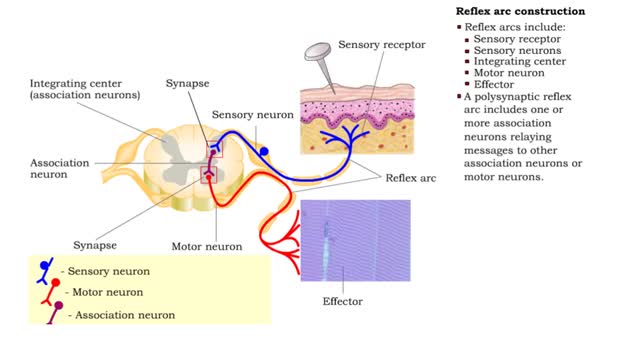
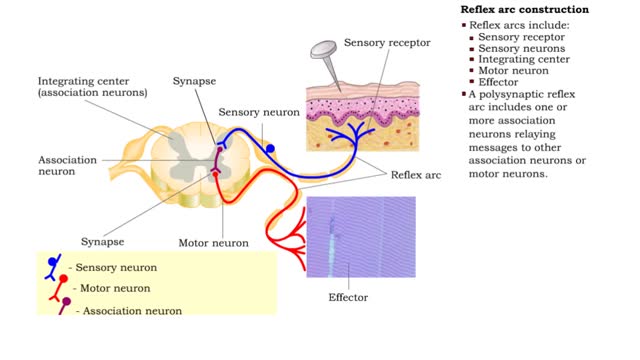
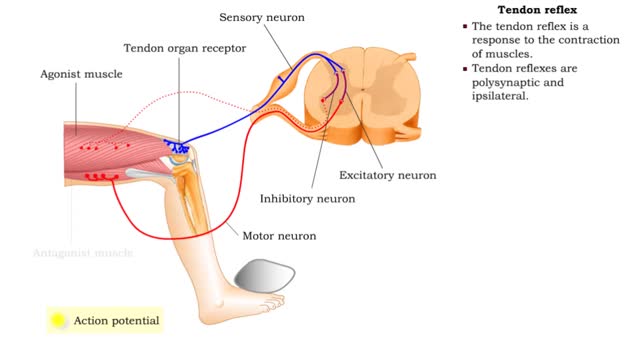

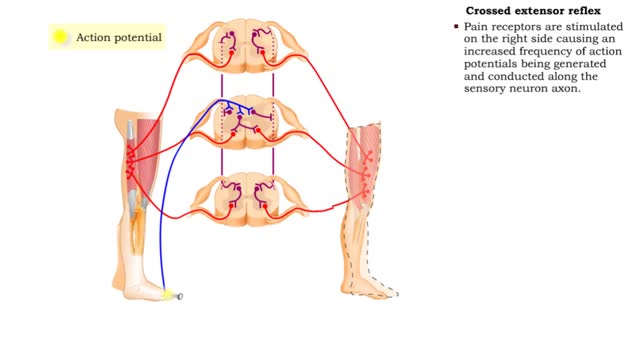

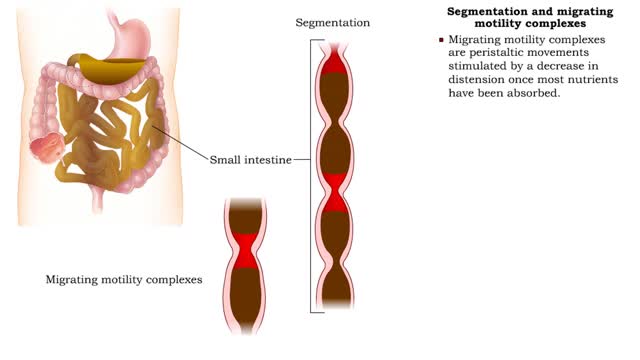

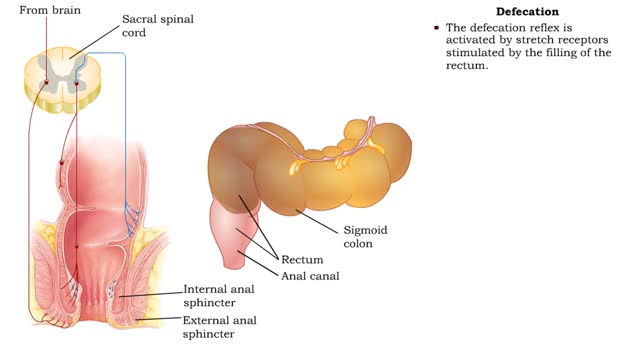
Comments
0 Comments total
Sign In to post comments.
No comments have been posted for this video yet.